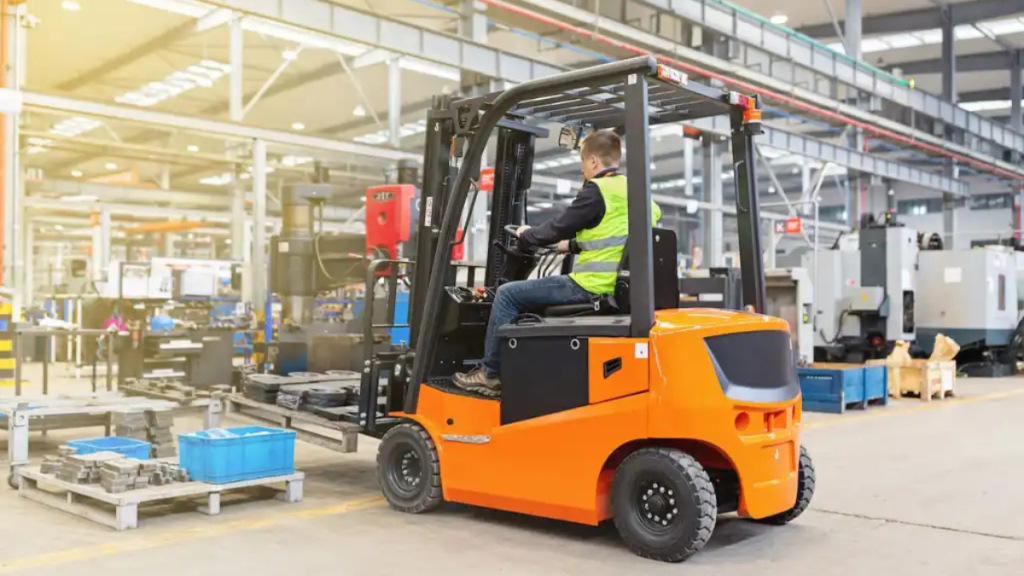In small warehouses, space is tight, aisles are narrow, and traffic mixes people with powered industrial trucks. Efficiency here is not just about moving more pallets per hour; it’s about preventing the stoppages, near-misses, and injuries that quietly drain capacity. Regulators frame the baseline: in the U.S., OSHA’s 29 CFR 1910.178 governs how powered industrial trucks are designed, maintained, and used, and it requires training and safe practices that—when embraced—translate directly into faster, smoother operations.
Many warehouse managers have found that enrolling their teams in Australian Forklift Training programs available equips operators with the precise skills needed to navigate confined spaces effectively. When operators are trained, equipment is inspected, and routes are planned, travel speeds are steadier, rework drops, and cycle times improve. Safety is the operating system for efficiency.
Train for Precision Driving and Load Control
Operator skill is the single biggest variable in a tight space. Formal instruction plus hands-on evaluation—on your actual loads and routes—produces smoother lifts, fewer corrections, and faster, safer travel. The use of accredited forklift training courses Australia helps ensure operators receive instruction tailored to the truck type and workplace conditions they’ll face daily.
Reinforce fundamentals that matter most in small warehouses: forking low during travel, steady cornering, looking in the direction of travel (including reversing when the load blocks the view), and using the horn and warning lights at intersections and doorways. These techniques protect pedestrians and keep your trucks moving at a consistent, productive pace.
Control Speed, Visibility, and Intersections
Intersections are where small-site inefficiency and risk spike. Treat them as engineered zones: convex mirrors, stop lines, line-of-sight policies, and mandatory horn taps. Keep forks just off the floor to stabilize the truck and expand forward visibility; avoid raising or lowering loads while moving to prevent instability and lost time recovering control. For those seeking to improve handling confidence, learn forklift operation with Australian Forklift to master reversing with blocked views, navigating blind corners, and maintaining awareness of pedestrians. These practices are repeatedly emphasized in national guidance because they directly reduce tip-over and struck-by risks that shut operations down.
Standardize Charging, Fueling, and Maintenance
Nothing clogs a small warehouse like a sidelined truck at peak. Create visual schedules for battery charging and LPG/diesel fueling so energy levels never become the bottleneck. Keep the charging area ventilated, clear of combustibles, and signed; maintain cylinders and tanks per manufacturer guidance. OSHA’s forklift standard also anchors maintenance expectations—trucks with safety defects must be repaired before use. Partnering with a provider for forklift certification with Australian Forklift ensures that operators understand proper fueling and maintenance procedures, reducing avoidable breakdowns and extending equipment life.
Separate People and Trucks With Rules Everyone Follows
Even perfect drivers can’t be efficient in a crowd. Establish and enforce pedestrian priority rules and marked walkways. Require eye contact or clear hand signals before entering shared spaces like dock plates or staging lanes. Training through forklift safety training at Australian Forklift can help operators internalize these site-specific safety rules, reducing “stand-offs” where people and trucks hesitate and stop. Clear rules produce predictable movements, and predictability is the backbone of speed.
Bottom line
In a small warehouse, you don’t have spare space—or spare minutes. Anchor your program in recognized standards (OSHA/ISO), design the floor for flow, insist on daily inspections, and train operators to a precise, site-specific standard. Do that, and you’ll see the two outcomes that matter most: fewer interruptions and faster, calmer freight movement shift after shift.




